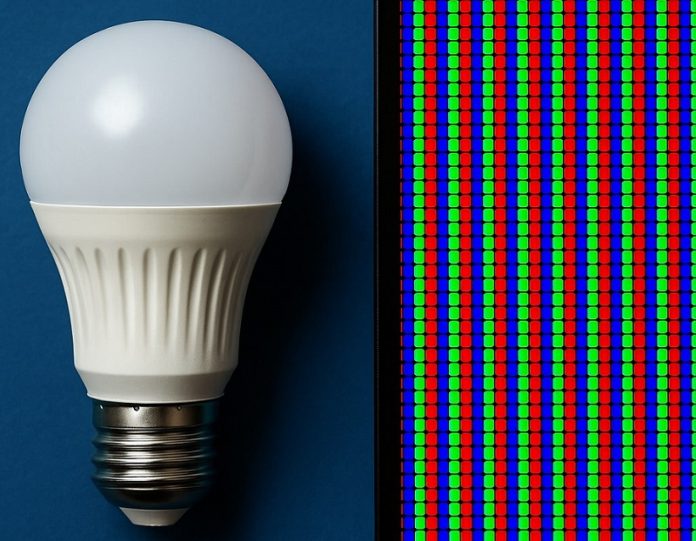
Lighting and display screens are everywhere—in our homes, offices, phones, computers, and even in medical devices.
But the technology that powers them comes at a heavy cost: massive energy use and reliance on rare earth metals that are expensive, environmentally damaging, and vulnerable to global supply disruptions.
Now, researchers at Oregon State University (OSU) have developed a promising alternative that could make lighting and displays both greener and more efficient.
The work, led by Associate Professor Kyriakos Stylianou and graduate students Kyle Smith and Ankit Yadav from OSU’s College of Science, focuses on materials called metal organic frameworks, or MOFs.
Their findings, published in Nature Communications, could help pave the way toward next-generation LEDs and display systems that reduce electricity consumption and limit environmental harm.
MOFs are porous crystalline materials made of metal ions connected by organic molecules, creating nanosized cavities within their structure.
Their unique design allows scientists to fine-tune their properties, making them versatile for applications ranging from clean energy to chemical storage.
In this study, the researchers set out to design MOFs that could replace rare earth metals in lighting and display technologies, particularly those metals like europium and terbium, which are costly to mine and harmful to the environment.
To do this, the team experimented with combining different types of MOF crystals. One approach, called “MOF-on-MOF,” involved stacking two MOFs together like building blocks to create a core-shell structure.
Microscopy confirmed that these layered crystals formed well-defined architectures. More importantly, this design improved light emission dramatically. Compared with conventional MOFs, the new MOF-on-MOF structures emitted light at roughly four times the efficiency.
“By controlling how the components interact, we discovered how to reduce energy losses that typically limit brightness in these materials,” Stylianou explained. “This higher efficiency means that future LEDs could produce the same amount of light while consuming far less electricity.”
The potential impact is significant. In the United States alone, lighting and display systems consume around 213 billion kilowatt-hours of electricity each year.
Because much of that power comes from fossil fuels, the result is an enormous amount of greenhouse gas emissions—about 13% of global carbon dioxide emissions.
If sustainable MOF-based materials replaced rare earth metals in displays and LEDs, the benefits would include not only lower energy use but also reduced production costs and fewer ecological consequences.
Stylianou emphasized the urgency of the work. “There’s an urgent need for advanced, efficient fluorescent materials, and we think our new MOFs can help fill that need,” he said. “We see a lot of potential in their ability to have economic, environmental, and climate impacts.”
This breakthrough suggests a future where our screens and lights could shine just as brightly but leave a much smaller footprint on the planet.


